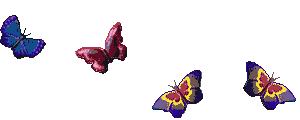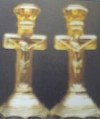Carnival Glass 101 | home Quick Reference to Carnival Glass Patterns
Introduction · How Carnival Was Made · Glass Process · Early Makers · Finding Carnival · Colors · Carnival Glass Edges · Buying Carnival · Carnival Terms · Glass Terms · Reference Books · What is This? · FAQ · Sharing Carnival · Links · Closing
Glass Process
A BRIEF DESCRIPTION OF THE GLASSMAKING PROCESS
NOTE: This information has been found in a file of old Club Newsletter – this one from the Northern California Club, dated 1989.
The chart was compiled by one Art Edwards of Fenton Art Glass Co. …..It is certainly worthy of reprint here. Enjoy!
A BRIEF DESCRIPTION OF THE GLASSMAKING PROCESS
|
||
ACTIVITY
|
AT WHAT TEMPERATURE
|
REQUIRES HOW MUCH TIME?
|
Ingredients weighed and mixed
|
at room temperature
|
approx. 30 minutes
|
Loaded into melting furnace
|
approx. 2000 deg. F.
|
approx. 5 minutes
|
Melting and refining takes place
|
approx. 2500 deg. F.
|
10-35 hours,
depending on type of glass and type of furnace
|
A group of men make glassware. They draw the glass from the furnace in
gobs ranging in size from 3 oz. to 90 oz. In some factories the glass flows from the furnace into forming machines on a
lower level.
|
approx. 2000 deg. F.
|
Men work 8 hour shifts
|
Each gob is formed into a basic shape by a man using air or mechanical force. In factories making less complicated shapes
or higher quantities, this forming is performed by machines.
|
approx. 2000 deg. F.
|
5 to 50 seconds
|
The basic shape is reheated and changed to the final shape.
|
1800 deg. F.
|
20 to 60 seconds
|
The piece is put in an annealing lehr to strengthen the glass and to cool it off.
|
1000 deg. F. to room temperature
|
1 hour to 6 hours or longer
|
The piece is then inspected, packaged and shipped.
|
room temperature
|
1 day to weeks
|
The main ingredients used and their approximate percentage of the total batch are:
Sand (SiO-2) 75%
Soda Ash (Na-2-CO-3) 15%
Lime (CaCO-3) 9%
Some manufacturers substitute potash for soda ash, and barium or borax for lime. In some opaque glasses, fluorspar and feldspar are substituted for lime.
|
||
The color controlling ingredients are mixed in with the main ingredients before melting. Some of the material used to create certain colors are:
|
|
MATERIALS
|
COLOR PRODUCED
|
Uranium
|
Yellow
|
Cobalt
|
Blue
|
Sugar and Iron
|
Amber
|
Neodymium
|
Pink
|
Iron
|
Green
|
Gold
|
Red
|
Selenium and Cadmium
|
Orange
|
Selenium and Manganese
|
Crystal
|
Alumina and Fluorine
|
White
|
COLOR
|
COLORANT
|
Burmese
|
Pure gold and Uranium Oxide
|
Custard
|
Uranium Oxide
|
Amethyst
|
Manganese Dioxide
|
Ruby Overlay
|
Gold and Crystal Glass
|
Blue Satin
|
Copper Oxide
|
Cranberry Opalescent
|
Gold and Calcium Phosphates
|
Colonial Blue
|
Copper
|
Colonial Amber
|
Sugar
|
UPDATE - August 16, 2015
Boyd Glass in Cambridge Ohio
Hello,
My name is Bob Applegate and I worked at Boyd Glass in Cambridge Ohio for about the first 8 or 9 years they were open. Anyway, I just wanted to let you know that I found your website and thought the information on it was very useful. I think it is great that someone cares enough to compile the information and then share it with others. With the Boyd’s ceasing glass production this year, I am afraid that glassmaking by hand is becoming a dying art in the USA. And with younger generations being collectors of electronics in place of glass, I am really afraid that trend will continue. I hope not. I hope this is just a downward trend comparable to the Depression, WWII, and other times, but I am afraid that may be an unrealistic hope.
That being said, the information on the chemicals needed to produce glass as compiled by Mr. Fenton is a very good article. However, I am sure that you are aware that the most common way for glassmakers in the 60’s, 70’s, and beyond to make red glass, whether it is a ruby color or an amberina style red, is to use a mixture of Selenium, Orange Cadmium and a few other rare earths. Sometimes the pieces will need to be “warmed in”, or reheated after being removed from the mould to bring out the rich red color but not always.
As I said, I am sure that you already knew that but thought I would share the information anyway. We made quite a few red colors of glass at Boyd’s and although saying the use of gold to make the red color seems romantic, expensive, and historic, it is not always the case for all red colors. Some reds require gold yes, but very few.
Again I want to thank you for taking the time and trouble to compile all of the information on your website, and for sharing the knowledge you have gained over the years of collecting glass. It is very, very generous of you.
Bob



back to Carnival Glass 101
Should you care to contact the Frys, their email address is:
Search Carnival Glass 101
Our other sites you may enjoy:
Everything you EVER wanted to know about Indiana Glass
Great Reference for Newer Carnival Glass.
Complete Glassware Catalogs Available to Download
Questions? Comments? Suggestions? Broken Links? Corrections?
Your Friendly Webmaster is here to help!
